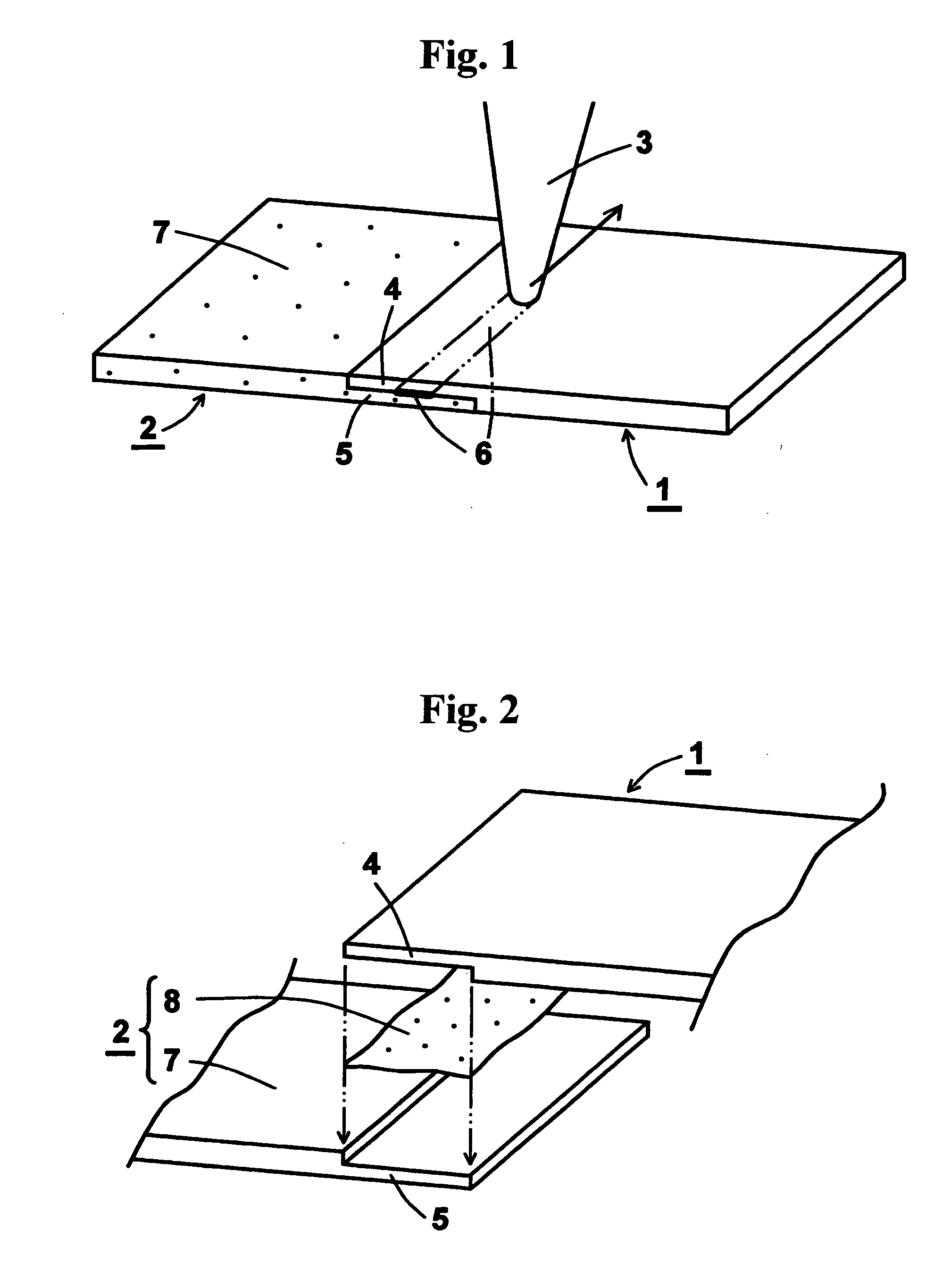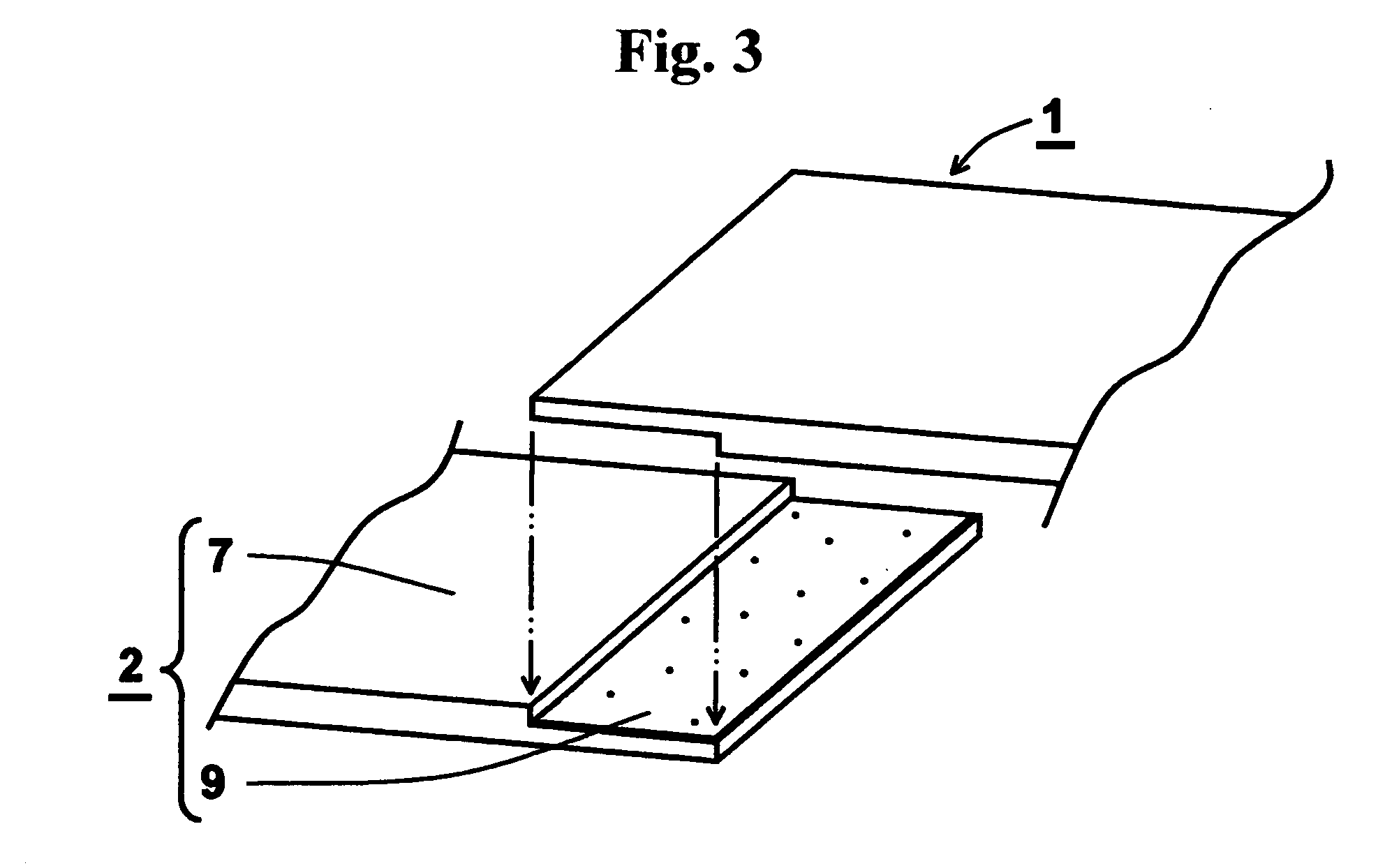Laser-transmissible resin composition and method for laser welding using it
a technology of laser welding and laser beam, which is applied in the direction of lamination apparatus, layered products, chemistry apparatus and processes, etc., can solve the problems of limited use, limited hue and use of suitable hues, and visible welding positions
- Summary
- Abstract
- Description
- Claims
- Application Information
AI Technical Summary
Benefits of technology
Problems solved by technology
Method used
Image
Examples
manufacturing example 1
Trial Manufacturing of a Test Piece (A) as the Laser-Transmissible Resin Workpiece
[0085] 1000 g of the polypropylene resin of catalog No. BC05B that is available from Japan Polychem Co., Ltd. and 3 g of titanium oxide having the average particle size of 210 nm and the density of 4.1 g / cm3 thereof treated on the surface thereof by aluminum were added in a tumbler made of stainless steel, and mixed with stirring for 1 hour to prepare the laser-transmissible resin composition. The obtained composition was executed by injection molding at 220 degrees Centigrade of temperature of a cylinder and 40 degrees Centigrade of temperature of a metal mold with general procedures using an injection molding machine of catalog No. Si-50 that is available from Toyo Machinery & Metal Co., Ltd. to manufacture the test piece (A) of the plate as the laser-transmissible resin workpiece 1 having length of 70 mm, width of 18 mm and thickness of 4 mm with the proviso of the end portion having the stair 4 of...
manufacturing examples 2 to 4
Trial Manufacturing of Test Pieces (B), (C) and (D) as the Laser-Transmissible Resin Workpiece
[0086] The procedures were executed as same as Manufacturing Example 1 except for using 6 g of the same titanium oxide of Manufacturing Example 1 under Manufacturing Example 2; 3 g of titanium oxide having the average particle size of 250 nm and the density of 4.0 g / cm3 thereof treated on the surface thereof by aluminum-silicon under Manufacturing Example 3; and 3 g of untreated titanium oxide having the average particle size of 270 nm and the density of 4.2 g / cm3 thereof under Manufacturing Example 4; instead of specified titanium oxide of Manufacturing Example 1 to manufacture the test pieces (B), (C) and (D) as the laser-transmissible resin workpiece 1. The surface and the appearance thereof were glossy, regular and exhibited the hue of white uniformly.
manufacturing example 5
Trial Manufacturing of Test Piece (E) as the Laser-Transmissible Resin Workpiece
[0095] The procedures were executed as same as Manufacturing Example 1 except for using 1000 g of the polypropylene resin including the glass fiber of catalog No. HG30U that is available from Japan Polychem Co., Ltd. and 6 g of titanium oxide having the average particle size of 210 nm and the density of 4.1 g / cm3 thereof treated on the surface thereof by aluminum instead of specified titanium oxide and the polypropylene resin of Manufacturing Example 1 to manufacture the test piece (E) as the laser-transmissible resin workpiece 1. The surface and the appearance thereof were glossy, regular and exhibited the hue of white uniformly. As regards the refractive index, n1−n2=1.19 and n2=1.57.
PUM
| Property | Measurement | Unit |
|---|---|---|
| Fraction | aaaaa | aaaaa |
| Percent by mass | aaaaa | aaaaa |
| Percent by mass | aaaaa | aaaaa |
Abstract
Description
Claims
Application Information
 Login to view more
Login to view more - R&D Engineer
- R&D Manager
- IP Professional
- Industry Leading Data Capabilities
- Powerful AI technology
- Patent DNA Extraction
Browse by: Latest US Patents, China's latest patents, Technical Efficacy Thesaurus, Application Domain, Technology Topic.
© 2024 PatSnap. All rights reserved.Legal|Privacy policy|Modern Slavery Act Transparency Statement|Sitemap


